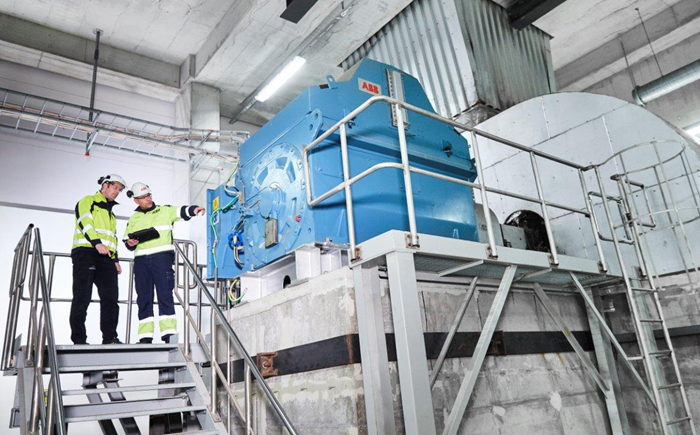The Top Industrial Efficiency (TIE) option offers an alternative pathway to achieving the highest possible energy efficiency, without compromising reliability, technical complexity, or compliance with specifications. It gives end users a simple, clear way to make significant progress in reducing CO2 emissions, while also substantially lowering the total cost of ownership.
Rather than focusing solely on minimum energy performance requirements, the TIE option represents a contractual commitment to deliver the most energy-efficient solution available, while ensuring the reliability of the product remains uncompromised.
With the TIE option, suppliers (using their expertise in specific products and systems) commit to offering the most efficient solution they can provide. The core objective is to help customers meet their sustainability goals while realizing long-term cost savings.
Raising Awareness and Encouraging Action
The TIE option is not intended to compete with the development of new, more stringent regulatory standards. Its purpose is to raise awareness and support the accelerated introduction of such standards for large electrical equipment, while recognizing the urgent need to reduce CO2 emissions.
ABB believes that offering cost-effective alternatives to today’s insufficient standards can help drive meaningful change, benefiting not only customers but all stakeholders across the value chain.
For reference, the maximum upcoming MEPS energy efficiency class requires 97 % efficiency for a 2 MW IE4-rated solution. The TIE option delivers even higher efficiencies for large synchronous motors and generators, reaching performance levels equivalent to IE6 and beyond.
Working Together for Sustainability
The ultimate aim of the TIE option is not only to improve the energy efficiency of motors and generators, but also to extend these gains across a wider range of industrial products and systems. As a concept, the TIE initiative is open and accessible to all.
Collective action is essential to reducing CO2 emissions and moving toward a more sustainable future, together.

Relative Illustration of top industrial efficiency option in comparison with current IE levels. Image Credit: ABB Motors and Drives North America
Core Advantages of the TIE Option
- Secure the future by utilizing cutting-edge energy-efficient technology
- A concrete way to live up to company values
- Reduce operational and lifecycle expenses and increase the bottom line
- A legally binding contract
All Barriers Removed:
- Same performance, no added deviations to specs
- No added complexity, same ease of use
- No compromise on dependability, same proven technology
- A practical measure accessible to all
ABB Large Motor and Generator Factory in Västerås
The TIE Option in Number
- Average payback time of only 0.5-3 years
- As much as 827 kilotons of CO2 savings annually
- Efficiency increases of up to three IE classes

Image Credit: ABB Motors and Drives North America
ABB’s Large Motor and Generator factory in Västerås has long been a leader in advancing energy efficiency and sustainability. Today, it produces ABB’s most energy-efficient motors and generators and is the first facility to implement the TIE concept, expanding the limits of energy efficiency.
At Västerås, an industry-leading motor efficiency of 99.05 % has been reached—currently the highest known commercial efficiency achieved—equivalent to an IE7 rating. Each motor and generator is individually tested before delivery, allowing ABB to continuously monitor and track efficiency improvements over time.
Despite current achievements, there is still potential for improvement. ABB has calculated that energy efficiency could be increased by one to three IE classes. This is possible even though the existing large motor and generator products already reach an average efficiency level of 98.3 % (IE4). The necessary technology is available and established. Broader adoption depends on customers placing more importance on efficiency and total cost of ownership.
If current customers consistently selected the TIE option, total electricity savings over the product lifetime would reach 1.6 TWh. Using the global average of 525,000 tons of CO2 per TWh, this would result in an annual reduction of 827,000 tons of CO2 from this single factory. This amount is equivalent to 6 % of Sweden’s total CO2 emissions from electricity generation.

This information has been sourced, reviewed and adapted from materials provided by ABB Motors and Drives North America.
For more information on this source, please visit ABB Motors and Drives North America.